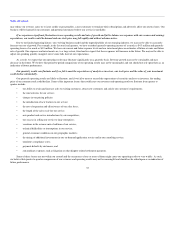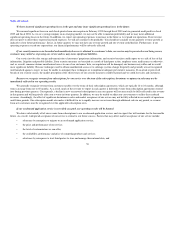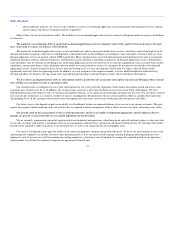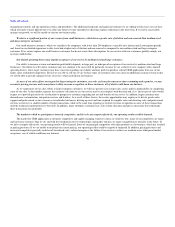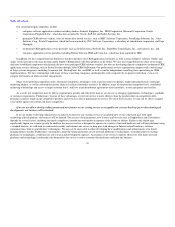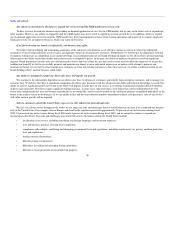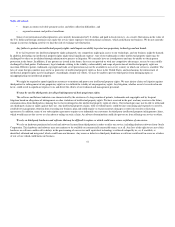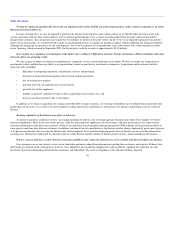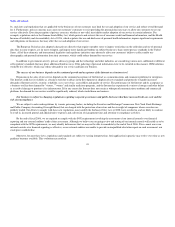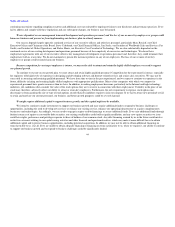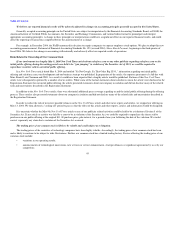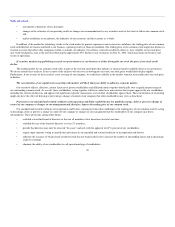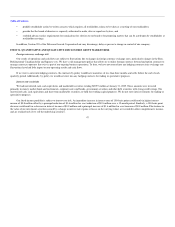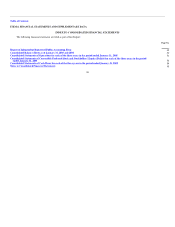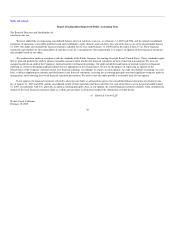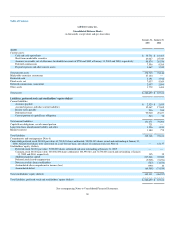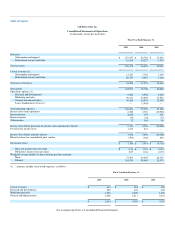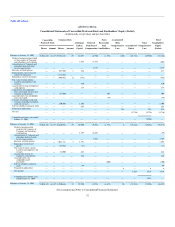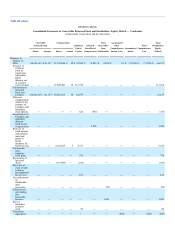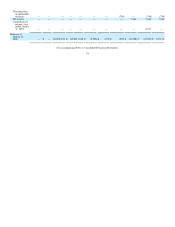Salesforce.com 2004 Annual Report Download - page 49
Download and view the complete annual report
Please find page 49 of the 2004 Salesforce.com annual report below. You can navigate through the pages in the report by either clicking on the pages listed below, or by using the keyword search tool below to find specific information within the annual report.
Table of Contents
We believe our reported financial results will be adversely affected by changes in accounting principles generally accepted in the United States.
Generally accepted accounting principles in the United States are subject to interpretation by the Financial Accounting Standards Board, or FASB, the
American Institute of Certified Public Accountants, the Securities and Exchange Commission, and various bodies formed to promulgate and interpret
appropriate accounting principles. A change in these principles or interpretations could have a significant effect on our reported financial results, and could
affect the reporting of transactions completed before the announcement of a change.
For example, in December 2004, the FASB announced its decision to require companies to expense employee stock options. We plan to adopt this new
accounting pronouncement, Statement of Financial Accounting Standards No. 123 (revised 2004), Share-Based Payment, beginning in the third quarter of
fiscal 2006. We believe this change in accounting will materially and adversely affect our reported results of operations.
Risks Related to Ownership of Our Common Stock
If our involvement in a lengthy May 9, 2004 New York Times article about salesforce.com or any other publicity regarding salesforce.com or the
initial public offering during the waiting period were held to be "gun jumping" in violation of the Securities Act of 1933, we could be required to
repurchase securities sold in our initial public offering.
In a New York Times article dated May 9, 2004 and entitled "It's Not Google. It's That Other Big I.P.O.," information regarding our initial public
offering and salesforce.com, our development and our business strategy was published. In preparation of the article, the reporter spent most of a full day with
Marc Benioff, our Chairman and CEO. As a result, it could have been expected that a lengthy article would be published. Portions of this New York Times
article were subsequently reprinted by a number of news outlets. While some of the factual statements about salesforce.com in the article were disclosed in the
Registration Statement for our initial public offering, the article presented statements about our company in isolation and did not disclose many of the related
risks and uncertainties described in the Registration Statement.
In addition to the New York Times article, there was substantial additional press coverage regarding us and the initial public offering during the offering
process. These articles also presented statements about our company in isolation and did not disclose many of the related risks and uncertainties described in
the Registration Statement.
In order to reduce the risk of investors' possible reliance on the New York Times article and other news reports and articles, we stopped our offering on
May 13, 2004. We then allowed a "cooling off" period to pass so that the effect of this article and other reports, articles and information would be dissipated.
It is uncertain whether the May 9th New York Times article or any of our publicity related activities could be held to be a violation of Section 5 of the
Securities Act. If any article or activity was held by a court to be in violation of the Securities Act, we could be required to repurchase the shares sold to
purchasers in our public offering at the original $11.00 purchase price, plus interest, for a period of one year following the date of the violation. We would
contest vigorously any claim that a violation of the Securities Act occurred.
The trading price of our common stock is likely to be volatile and could subject us to litigation.
The trading prices of the securities of technology companies have been highly volatile. Accordingly, the trading price of our common stock has been
and is likely to continue to be subject to wide fluctuations. Further, our common stock has a limited trading history. Factors affecting the trading price of our
common stock include:
• variations in our operating results;
• announcements of technological innovations, new services or service enhancements, strategic alliances or significant agreements by us or by our
competitors;
45


